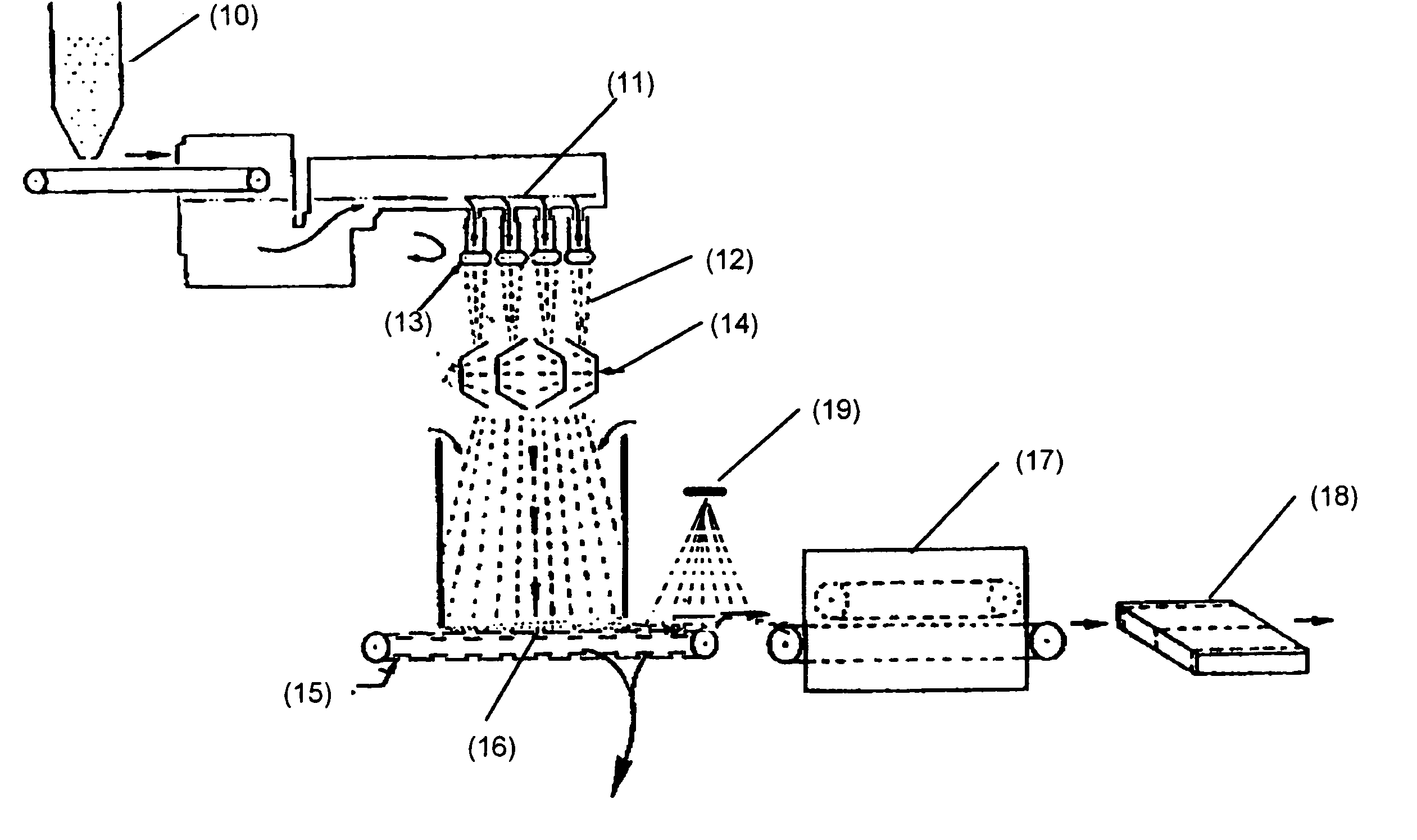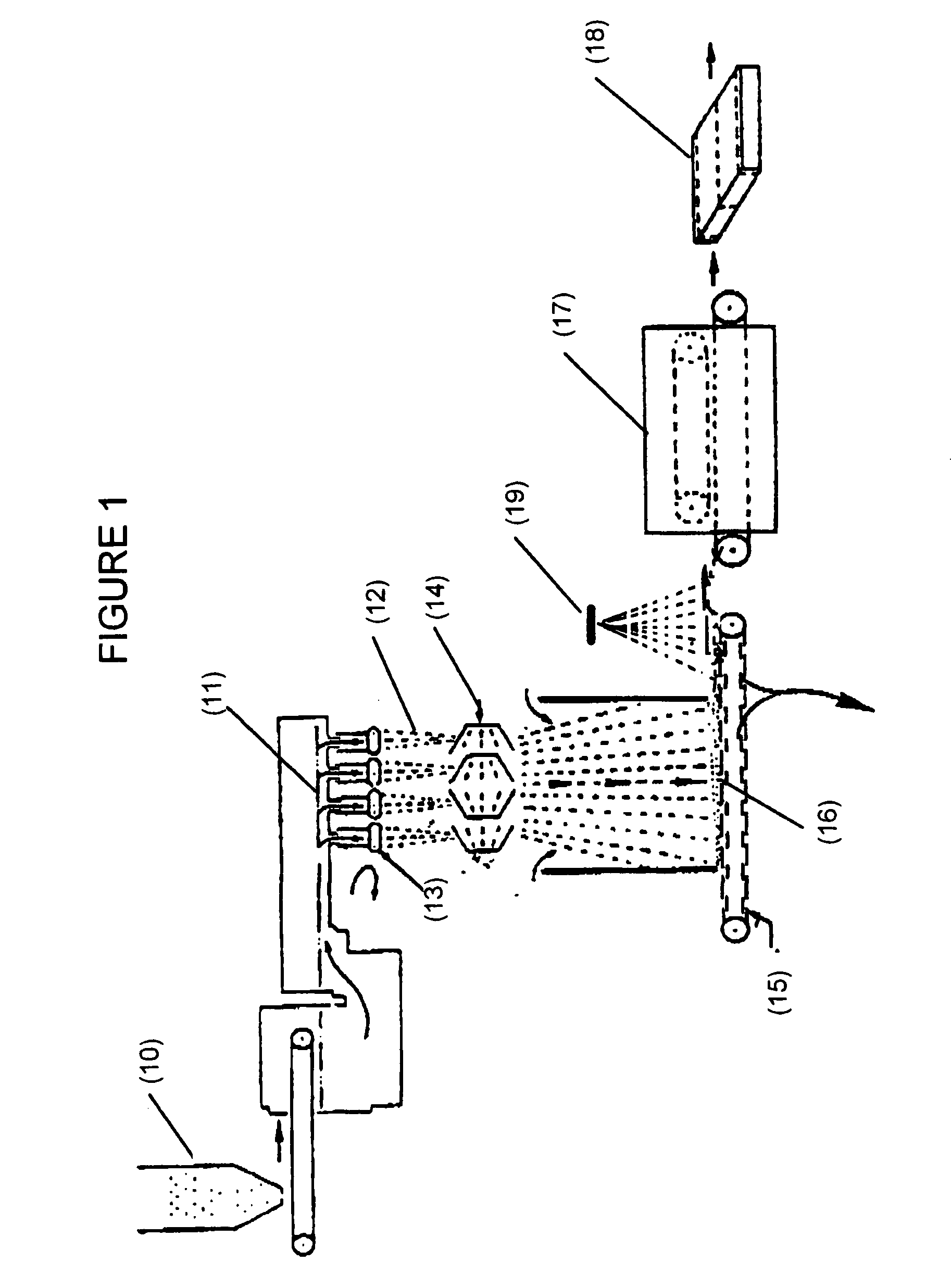Fibrous mats having reduced formaldehyde emissions
a technology of formaldehyde and fibrous mats, which is applied in the field of fibrous mats making process, can solve the problems of increasing reducing the thermal insulation and sound attenuation properties of products, and the potential for formaldehyde emissions during the preparation of adhesive resins, so as to reduce the tendency, reduce the tensile properties of cured products, and maximize the effect of scavengers
- Summary
- Abstract
- Description
- Claims
- Application Information
AI Technical Summary
Benefits of technology
Problems solved by technology
Method used
Image
Examples
example 1
[0062]To simulate the manufacture of fiberglass insulation, batts were prepared in the laboratory as follows. A roll of 1 inch thick, un-bonded, fiberglass was obtained from Resolute Manufacturing and divided into individual sheets weighing about 30 grams. Individual un-bonded fiberglass sheets were placed in a tray. A formaldehyde-containing binder was placed into a reservoir and air was used to aspirate the binder into a fine mist. The mist was drawn through each individual batt using an air exhaust hood. This technique caused fine binder droplets to be deposited onto and into the batt. In each experiment, approximately eight grams of binder was deposited onto each sample of the glass batt. In the case of those experiments simulating the present invention, after misting with the binder, a surface of the batt was sprayed with an aqueous formaldehyde scavenger solution using a Windex®-type spray bottle. In either case, following binder application, the batt was next cured in a force...
example 3
[0073]As in Comparative Example 2, binders were formulated from an aqueous phenol-formaldehyde resin that is commercially available from Georgia-Pacific Resins, Inc. as resin 209G56. The aqueous resin first was mixed with a 40% by weight aqueous solution of urea in an amount of 1 part urea solution per approximately 1.8 parts aqueous resin. The mixture was allowed to “pre-react” overnight at room temperature to yield a pre-mix. Shortly before application to a glass mat, 1 part by weight of aqueous ammonia (28% by weight ammonia); and 5 parts by weight of an aqueous ammonium sulfate solution (20% by weight ammonium sulfate), as a cure accelerator or catalyst, were added per approximately 38 parts by weight of the pre-mix to complete the base binder formulation.
[0074]As in Comparative Example 2, an amount of water was added to the binder formulation to yield a binder with 20% binder solids (20% solids as resin and urea solids). In particular, 1.78 parts water per part of premix was ad...
PUM
| Property | Measurement | Unit |
|---|---|---|
| aspect ratio | aaaaa | aaaaa |
| aspect ratio | aaaaa | aaaaa |
| temperatures | aaaaa | aaaaa |
Abstract
Description
Claims
Application Information
 Login to View More
Login to View More - R&D
- Intellectual Property
- Life Sciences
- Materials
- Tech Scout
- Unparalleled Data Quality
- Higher Quality Content
- 60% Fewer Hallucinations
Browse by: Latest US Patents, China's latest patents, Technical Efficacy Thesaurus, Application Domain, Technology Topic, Popular Technical Reports.
© 2025 PatSnap. All rights reserved.Legal|Privacy policy|Modern Slavery Act Transparency Statement|Sitemap|About US| Contact US: help@patsnap.com


